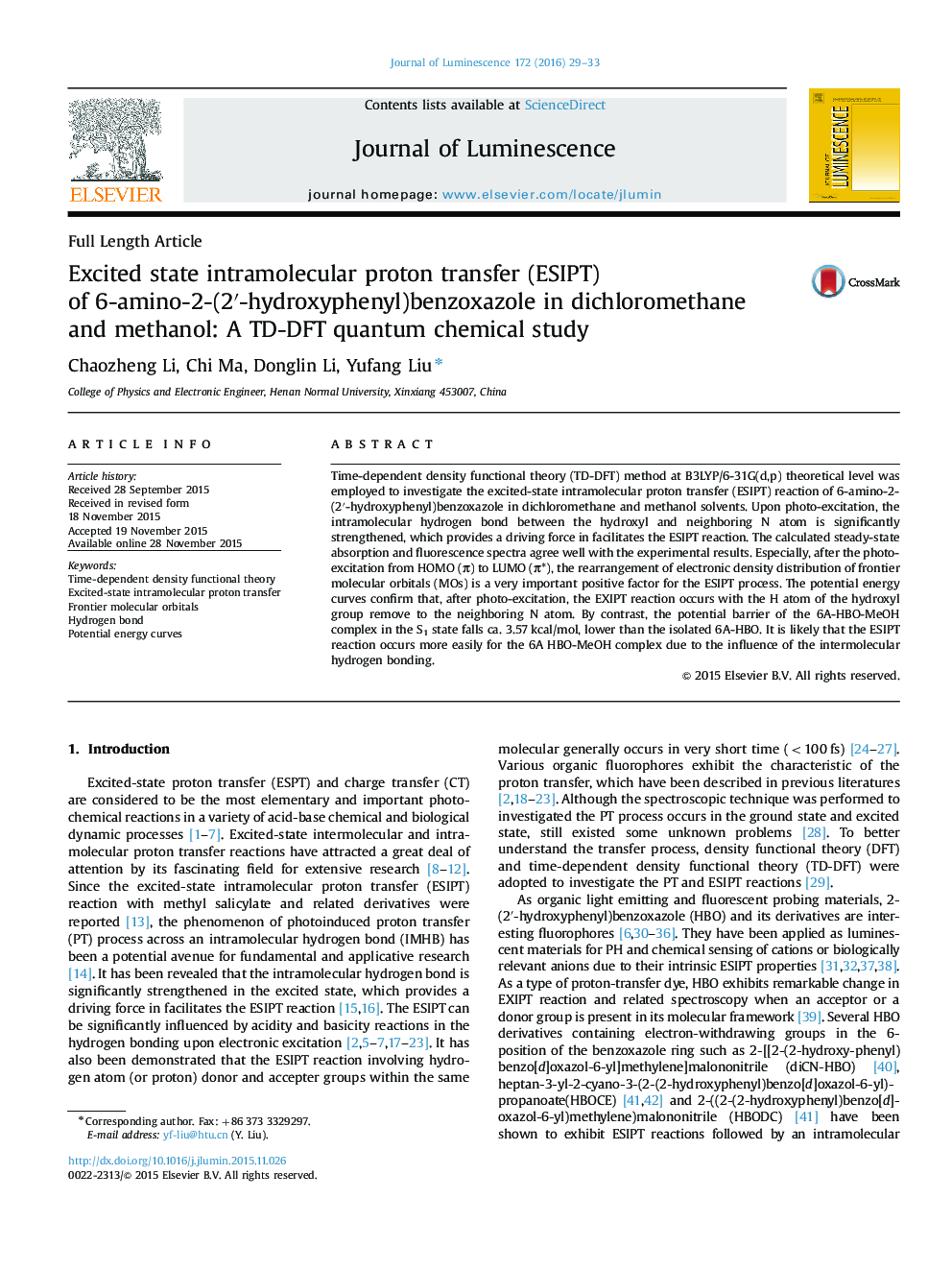| Article ID | Journal | Published Year | Pages | File Type |
|---|---|---|---|---|
| 5398615 | Journal of Luminescence | 2016 | 5 Pages |
Abstract
Time-dependent density functional theory (TD-DFT) method at B3LYP/6-31G(d,p) theoretical level was employed to investigate the excited-state intramolecular proton transfer (ESIPT) reaction of 6-amino-2-(2â²-hydroxyphenyl)benzoxazole in dichloromethane and methanol solvents. Upon photo-excitation, the intramolecular hydrogen bond between the hydroxyl and neighboring N atom is significantly strengthened, which provides a driving force in facilitates the ESIPT reaction. The calculated steady-state absorption and fluorescence spectra agree well with the experimental results. Especially, after the photo-excitation from HOMO (Ï) to LUMO (Ï*), the rearrangement of electronic density distribution of frontier molecular orbitals (MOs) is a very important positive factor for the ESIPT process. The potential energy curves confirm that, after photo-excitation, the EXIPT reaction occurs with the H atom of the hydroxyl group remove to the neighboring N atom. By contrast, the potential barrier of the 6A-HBO-MeOH complex in the S1 state falls ca. 3.57Â kcal/mol, lower than the isolated 6A-HBO. It is likely that the ESIPT reaction occurs more easily for the 6A HBO-MeOH complex due to the influence of the intermolecular hydrogen bonding.
Keywords
Related Topics
Physical Sciences and Engineering
Chemistry
Physical and Theoretical Chemistry
Authors
Chaozheng Li, Chi Ma, Donglin Li, Yufang Liu,
